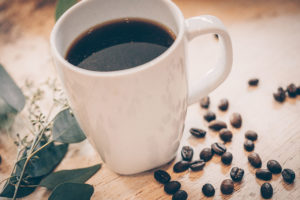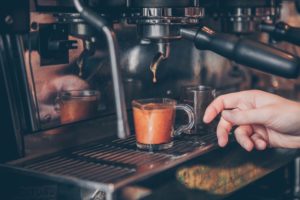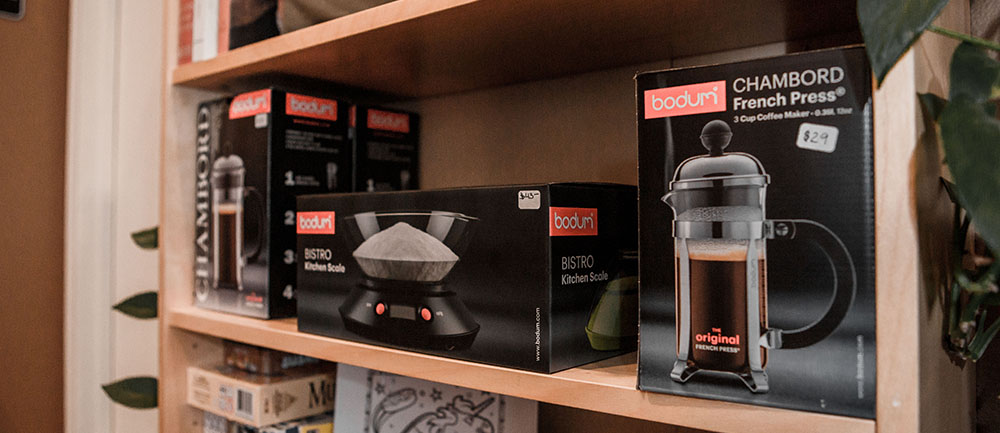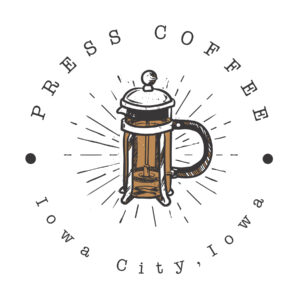Coffee in Quarantine
- Lisa Edwards
- Mar, 24, 2020
- Behind the Bar, News
- Comments Off on Coffee in Quarantine
With everyone hunkered down in the midst of the COVID-19 Pandemic, most daily routines have undergone some major changes. Whether you’re stuck at home or forced to venture out in the world for work while many local business have closed their doors, the way you obtain your morning caffeine has likely been altered in some way. We can’t thank everyone enough for the continued support during this time with our altered hours and pick-up only service, but we understand and encourage you all to stay home if possible. Here are a few options and tips to get an at-home brewing setup that meets your needs.
First of all, there are a few items to gather or purchase if you don’t already have them at home. Depending on what method of brewing you will be using will determine what you’ll need more specifically, but a few things worth purchasing are a water kettle, a scale, and a burr grinder. Stovetop kettles work just fine, but there are electric ones with built-in temperature controls that help get you closer to the perfect cup of coffee. A scale enables you to measure and control your coffee to water ratio, something we will elaborate more on later. As for grinders, the more common blade grinders are far less expensive but not as exacting when looking for uniformity in your coffee grounds.
These days the devices for making coffee at home are wide-ranging and no matter what you’re using there are a few key factors to making a great cup of coffee: time, temperature, ratio, and grind. These things can all be tweaked to ensure whatever method you are using will produce something worth savoring in the morning.
Drip Coffee
Next to the toaster and electric can opener, a drip coffee pot has been a staple on kitchen counters for years. While they have moved to the background as specialty coffee has surged, they do have a few advantages. First of all, it’s essentially a water kettle and brewer in one, meaning you can forget the kettle and save your pennies for that burr grinder instead. Also, if you’ve got a gaggle of caffeine guzzlers at home, a drip pot is great for brewing coffee in large quantities. Lastly, once you load it up with water and coffee, you can just set it and forget it or even program it to wake you up with the smell of fresh-brewed goodness.
Unsure what single-origin, organic, or direct trade means?
Demystify some of the common words found on your bag of coffee.
The water temperature can greatly affect the taste of the coffee it produces. If it doesn’t reach the 195-205 degree range when the brewing process starts, it could come out under-extracted and sour-tasting. If it brews too hot it will over-extract, leaving a bitter taste in your mouth. Knowing the temperature your pot brews at or being able to control it will help you lock down this variable of the process. Whether or not your water is filtered can change the taste as well, so always go for filtered if you have access to it.

The next variable to look at is the grind of the bean. Investing in a high-quality grinder means that you can freshly grind beans each time you make coffee, leading to a better tasting product. It also allows you to dial in specific grind levels and ensure that your beans get evenly ground. For a drip machine that has a flat-bottom filter, a fine grind is needed so that the water can move quickly through the grounds. If the grind is uneven or too coarse, it can again lead to an over or under-extracted cup. If you’re hesitant to go all-in on a fancy grinder at home, most coffee shops will do it for you. If it will be used within a week or two, this option is preferable than taking whole bean coffee home to use with a blade grinder. Grocery stores often have a grinder in the coffee aisle as well, but you risk taking home the residue of every other bean put through before you.
Interested in the coffee growing process?
Explore the process from the coffee plant to the coffee roaster.
If your pot of coffee just isn’t coming out quite right, consider checking the math on your coffee to water ratio. The ideal number to hit is 1:15 but can be dialed up or down to make a stronger or weaker cup depending on individual taste. This is where a scale comes into play, allowing you to know just how much coffee you’re putting in the basket and how much water is running through it. If you’re just winging it, a tablespoon of grounds is roughly 15 grams, making it about 8 ounces of water per tablespoon.
French Press
If you’re already a fan of our brewed coffee, then you enjoy the rich, full flavor of a French Press, a method easy enough to replicate at home. We still have a few presses at the shop for sale (contact us if you’re interested in purchasing one!) but if you’re looking online, Bodum is an excellent brand to choose from. They have many different sizes and styles of presses, as well as every other coffee accessory you might need.
Check out our step-by-step guide for brewing with a French Press.
Now is when an electric kettle comes in handy, allowing you to set the temperature to 200 degrees and measure out a specific amount of filtered water. With just a stove-top kettle, you can achieve roughly the right temp by bringing water to a boil and then removing it from heat for 30-60 seconds. Next, set your burr grinder to coarse so that the water can soak up the oils and flavors from large particles of coffee. The 1:15 coffee to water ratio may need adjusting since this method produces a richer, bolder cup. A four-minute brew time is what we use, but this can also be altered to fit your taste. If all these variables are met, then any cup of French Press coffee should come out smooth and less acidic than other gravity-based methods.
When disposing of the grounds from your press, try to avoid dumping them down the drain, unless you’re trying to drum up business for your favorite plumber. Rinse the press and dump the grounds over a fine strainer or cheesecloth. Then simply toss the grounds, compost them, or try one of these other creative uses for coffee grounds.
Pour Over
If the French press produces a cup that is too rich or oily for your taste, pour-over brewing results in a much cleaner cup of coffee. The coffee to water ratio and the temperature remains the same, but you’ll want to set the grind to fine. Chemex is an ever-popular device for this method, as well as the Hario V60, and cones by Kalita and Melitta. Most devices have their own filters that come cone-shaped as opposed to the flat-bottom filters made for drip machines. There are also kettles made for pour-over brewing to ensure the temperature remains consistent as you pour.
Curious what happens to the coffee bean to make it go from green to brown? Read more.
With this method, there are a few techniques for the actual pouring of water. First, pouring in concentric circles helps ensure that all the grounds are saturated and you don’t run into channeling problems. The water wants to find the quickest way through the grounds and if you keep pouring in one spot, it will funnel through too quickly and not absorb as much coffee. Having uniformly, finely ground coffee will help avoid problems like this as well. Next, you can choose between the pulse pouring method or a continuous pour. The latter has a constant pour rate and temperature while the former varies the amount and consistency of pours. This helps disrupt the grounds, getting more contact with water and helps avoid channeling as well. For a more in-depth look at pour-over, check out this article.
Espresso
If you’re sick of brewed coffee and want to mix it up with some espresso at home, there are smaller coffee-shop style machines to get for your own kitchen but will potentially cost you hundreds of dollars. Skip the heavy machinery and purchase this Wacaco Minispresso gadget instead. Great for making espresso on the go, it’s a no-fuss way to make it at home too. Having personally seen it in action and tasted the end result, I can say that it is worth checking out. However, with excessive use, the reviews indicate that it might not hold up over time. All that is needed is very finely ground coffee and hot water; your hands do the rest. While you’re shopping online, pair it with a handheld electric milk frother and you can be your own barista!

Cold Brew
Lastly, if iced coffee is your preferred mode of caffeination, cold brew is an easy do-it-yourself method. All it takes is coarse ground coffee, cold filtered water, and time. We have pre-measured grounds for sale in the Jump Coffee app with regular and fall brew options.
This method isn’t dissimilar to the French Press as both allow the grounds to soak in water which produces smooth-tasting results. In fact, it can even be made in a press with the added benefit of the plunger for separating the grounds upon completion. Whatever vessel you use, the key is to brew it with cold or room temperature filtered water for 24 hours. Brewing hot coffee and then pouring it over ice will lead to a bitter-tasting brew while cold brew gets its smoothness from the cold soaking method. The ratio of grounds to water will change a bit, with a general guide of 3/4ths cup of grounds for every four cups of water.

Being stuck at home makes now the time to perfect your morning coffee ritual. Order beans from us through the app at the pound or half-pound, and indicate if you’d like us to grind it to suit your needs. If you have any questions or roadblocks, feel free to shoot us a message or e-mail and we’ll help you sort it out!

Pressing Newsletter
Social
Find us online:
Facebook
Instagram:
@PressCoffee_ic
@PupsofPress
TikTok
Yelp
Order through the Joe Coffee app!

